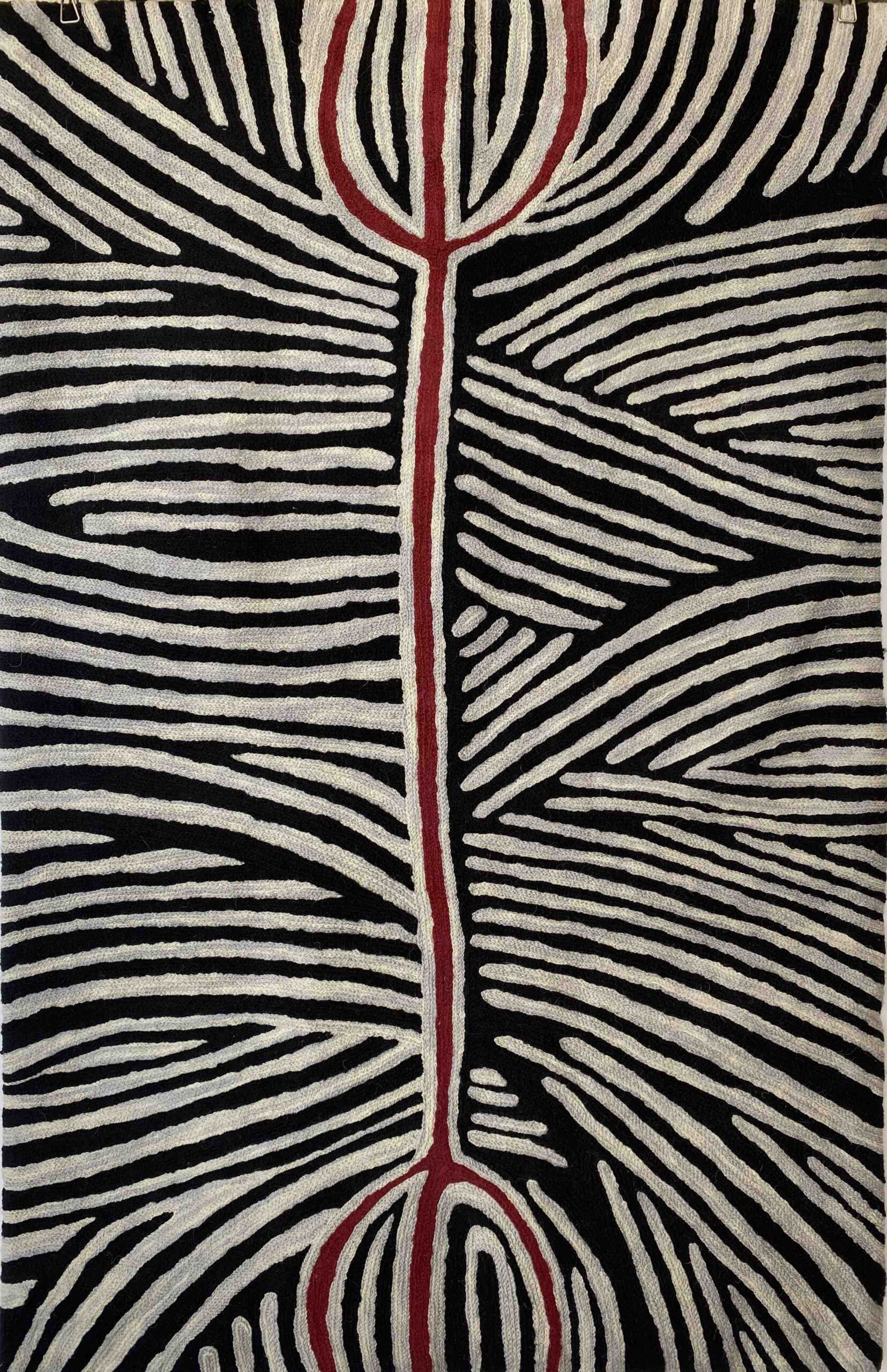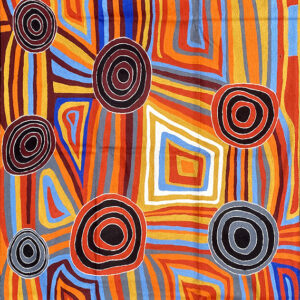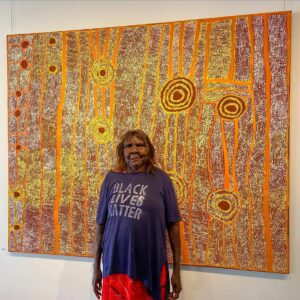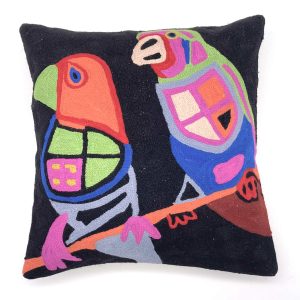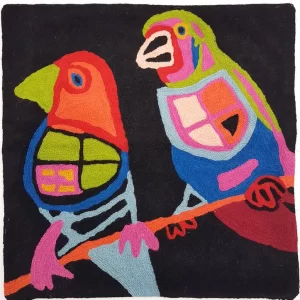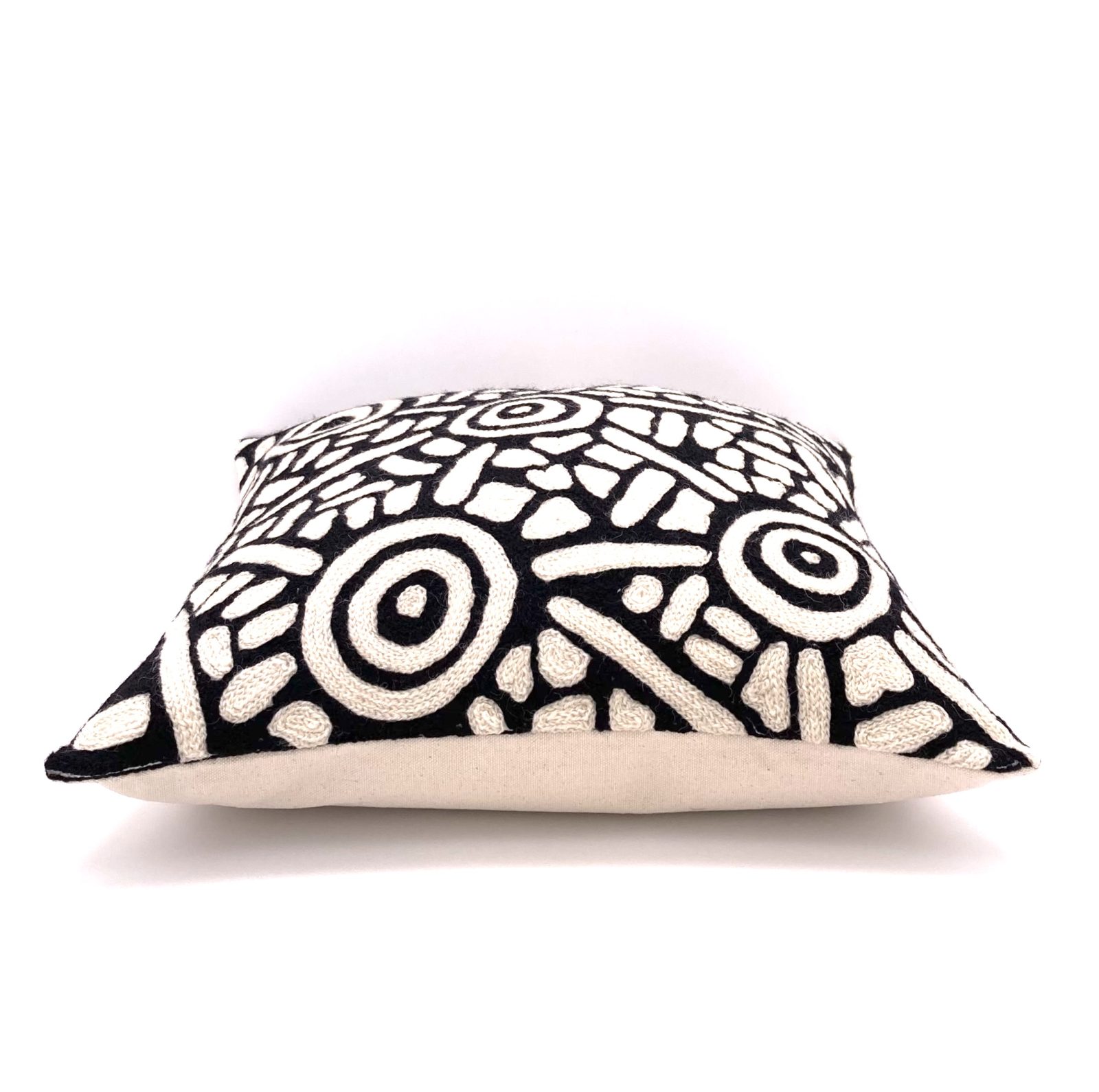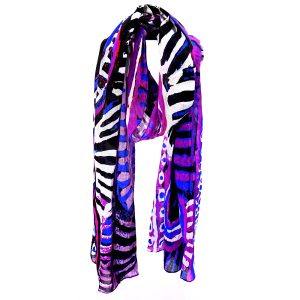Description
Composition: Hand dyed wool and cotton
Size: 61 x 91 cm (24 x 36 inches)
Features:
- Hand embroidered/chain-stitched
- All natural fibres – embroidered wool on cotton canvas
- Fair Trade certified
- Limited edition – individually numbered
- Certificate of Authenticity supplied with each kilim
- Royalties paid to the artist/family on every sale
- Hard wearing
- Back has non-slip surface
- Each kilim has flap on the rear for ease of hanging with dowel/rod
- Matching cushion covers are also available
Chain-stitched kilims are a traditional rug/soft furnishings making technique from Kashmir. As people sat on the floor they were both homewares and decoration. As many artworks are painted on the ground or 3D surfaces/bodies most of the images do not have a set orientation so can also be hung portrait or landscape if preferred.
The artist: Valda Napangardi Granites
About the design: Mina Mina Jukurrpa (Mina Mina Dreaming)
The country associated with this Jukurrpa is Mina Mina, a place far to the west of Yuendumu, which is significant to Napangardi/Napanangka women and Japangardi/Japanangka men. All of them are the custodians of the Jukurrpa that created the area. The Jukurrpa story tells of the journey of a group of women of all ages who travelled to the east gathering food, collecting ngalyipi (snake vine – Tinospora smilacina) and performing ceremonies as they travelled. The women began their journey at Mina Mina where karlangu (digging sticks) emerged from the ground. Taking these implements the women travelled east creating Janyinki and other sites. Their journey took them far to the east beyond the boundaries of Warlpiri country. The ngalyipi vine grows up the trunks and limbs of the kurrkara (desert oak – Allocasuarina decaisneana) trees. Ngalyipi is a sacred vine to Napangardi and Napanangka women that has many uses. It can be used as a ceremonial wrap, as a strap to carry parrajas (wooden bowls) that are laden with bush tucker and as a tourniquet for headaches.
Valda Napangardi Granites is an Australian Aboriginal artist from the Yuendumu Community, approximately 300 km north west of Alice Springs in the Northern Territory’s vast interior.
Valda comes from an esteemed lineage of artists, her grandparents being Warlukurlangu Art Centre foundation artists, Paddy Japaljarri Sims and Bessie Nakamarra Sims. Valda commenced painting in 1993, however family and non-art related work commitments kept her from fully developing her career as an artist.
In the late 2010s, Valda began to focus more on her Aboriginal art. Valda’s paintings have developed towards the classical black and white Aboriginal dot painting style pioneering by Dorothy Napangardi, another artist hailing from the remote Mina Mina area west of Yuendumu. Unlike Dorothy, at this point in Valda’s development, she is not using ochre in her palette.
Valda paints Mina Mina Dreaming, the same Dreaming made famous by fellow artists from the Mina Mina area, Judy Napangardi Watson and Maggie Napangardi Watson. However, unlike Judy, Valda employees a minimalistic dot art style, using only white on black. As such, her style appears to be developing very much towards contemporary Aboriginal art.
CARE INSTRUCTIONS:
Do not put place/use in direct sunlight or colors may fade. To clean – dry cleaning recommended. Can be ironed on a wool steam setting.
About the Better World Arts chainstitch kilim products
These beautiful, unique textiles are a cross-cultural collaboration combining Aboriginal designs and traditional Kashmiri rug-making techniques. Chain stitched, using hand dyed wool, each is a completely handmade piece. A more empowering way to work, this brings many direct benefits to the artists’ and their community. Control and ownership of intellectual property are also maintained. Purchase of these products guarantees a direct return to the Aboriginal artist’s family and their community.

